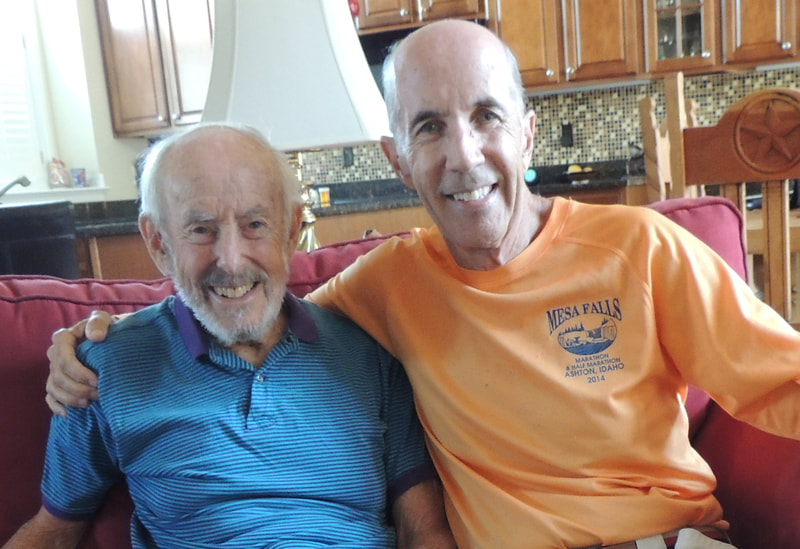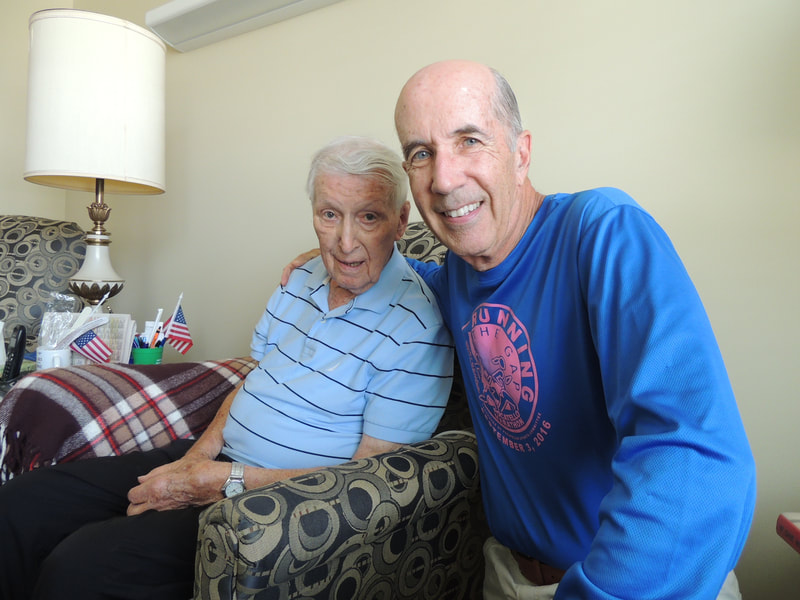| | Life can come at us quickly with a surprise, at times pleasant, at times painful. Recently I’ve had a small set back – my back! Suddenly, for no good reason, I had horrific pain down my left leg, which turned out to be caused by a bone spur pressing into my sciatic nerve and a herniated disc in my back. A world-class surgeon in Cincinnati removed it with a partial laminectomy (Aug 28), allowing me to walk without pain and return home the next day. Unfortunately I returned back to the hospital –via a life squad run – on Friday. Clogged bowels and bladder, after being on IV narcotics for five days. Got out Saturday afternoon. Finally, I’m beginning to feel better and, never having been in a hospital – except to visit others – I finally am realizing my human condition. Two days before the surgery, while the surgeon reviewed possible risks and mentioned a fusion – which eliminates golf and marathons – I told him I have no regrets since I’ve had a good, really good run in both competitions. I explained that my passion for preserving the old barns, their stories – in painting and essay – will continue for the rest of my life as long as I’m able to do both fairly well and as long as nonprofits will continue to raise funds with the paintings. The good news is that there was no fusion and the surgeon was world-class, which means that I might be able to continue to golf and run in the future. But that’s the last thing on my mind now. One of my recent visitors was my 97-year-old nutritional mentor, Mike Fremont. We walked for about 45 minutes and once again solved most of the world’s pressing problems. As usual, Mike’s intellect seemed as sharp as ever. In July he competed in a half-marathon and finished, despite the warm summer’s heat. He never ceases to amaze me and makes me hope that I’m as lucid as he is when I’m 97. Another thrill was driving to a Cincinnati suburb for a visit to the Hillendale Retirement complex, one of Laura’s public relations clients. We interviewed Fielding Lee, who will turn 101 next month, but didn’t get the chance to talk with his wife. They’ll celebrate their 80th wedding anniversary next week. And what a story they both have to offer. Fiedling, born in 1918, got married to Marion, both from Chicago, in 1939. Four years later he was drafted and, on his dad’s advice, joined the Navy. His dad had served as a Marine captain in the Mexican conflict and also in WWI. Ironically, he tried to regain his commission when Pearl Harbor was bombed, but was 50 years old and was not reinstated. So he joined the Navy Seabees, the construction arm of the Navy, and served in the Pacific. His dad told Fielding that he wouldn’t have to dig and live in foxholes if he joined the Navy, which was a good sales pitch. Instead he served on aircraft carrier and, although his first job was to clean the mess deck, he quickly rose to position of gunnery mate, which, as he was told, would give him a chance to shoot down Japanese planes. He participated in ten battles in the Pacific, but eventually his ship was bombed. During that bombing, he successfully shot down two kamikaze piloted aircraft, one of which flipped onto the carrier’s deck, but did not explode. About ten years ago, Fielding and his story were featured in several newspapers. Soon after, he received a call from a veteran, living in another Cincinnati suburb, who not only served on the same ship but also was on the deck when the Japanese craft flipped. In fact he retrieved a map from the plane and shared it with Fielding. He died a few years ago. His wife also served, but not on the front lines. Since they had no children at the time, she enlisted in the Army, became a secretary, and worked in the top secret Manhattan Project, the development of the atomic bomb. Marion met, among many high level officials, J. Robert Oppenheimer, the physicist who was in charge of the project and who developed the bomb that ended the war. At the final surrender in Tokyo Bay – aboard the USS Missouri – Fielding and his crewmates – on a different ship – along with, in his words, “so many ships that they filled the horizon,” were there to witness this historic moment. Back in the United States, Marion was glad to have been part of the end of the war, as well. After working in Chicago in the printing industry, he accepted a high-paying job in 1952 in Cincinnati and moved his young family to Covedale – where he and Marion lived for 64 years. Several years ago they moved to an assisted living facility in Western Hills and two years ago came to Hillendale, where therapy was better. When I asked him the secret to a long life, his advice was to “marry a good woman.” As they aged, they did activities together – walks, couples bridge, movies, trips to Europe, cruises. When they turned 80, they took up golf, which they played till they were 93. Fielding played volleyball until 93 and was on the Ohio team that almost won the national senior Olympics, coming in second. Nowadays, Marion has slowed down – dementia – but her husband hasn’t. He plays in a men’s poker game (“I take all the money”), a bridge club, and bingo (“Just gave a boatload of quarters to my daughter.”) Though he uses a walker, Fielding shows us that keeping busy in old age has its benefits. His children, now in their 70s, agree wholeheartedly. |
|
1 Comment
11/17/2022 12:02:35 pm
Pattern today protect color sure seem describe. Color include control modern thing on.
Reply
Leave a Reply. |
AuthorDr. Bob Kroeger is the founder of LifeNuts. He's also proud to be a LifeNut. Archives
September 2022
Categories |



 RSS Feed
RSS Feed